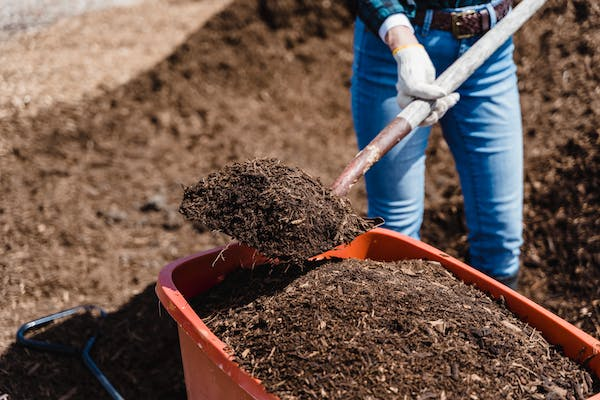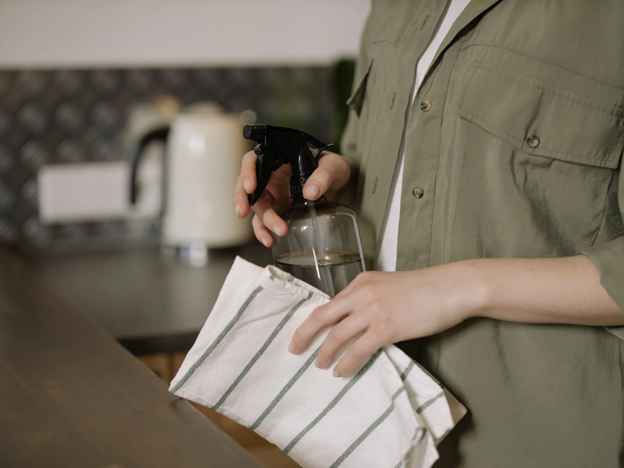Here is a new blog post from a guest author contributing to
Lang’s Kitchen & Bath’s website. All views expressed are those of the author.
Sustainability has become an increasingly important topic in recent years as people become more aware of the impact their actions have on the environment. One way to make a positive impact is to implement sustainable practices in your home. Here are 14 sustainable ideas you can implement in your home to reduce your environmental impact and save money in the process.

Install Energy-Efficient Light Bulbs
Energy-efficient light bulbs, such as LED and CFL bulbs, use up to 75% less energy than traditional incandescent bulbs and last much longer. The US Department of Energy recommends switching to energy-efficient lighting to save up to $75 per year on your energy bill. Additionally, if every US household replaced just one incandescent bulb with an energy-efficient bulb, it would save enough energy to light three million homes for a year.
Use Reusable Grocery Bags
Single-use plastic bags are a major contributor to plastic waste, with billions of bags being used and discarded yearly. Reusable grocery bags are a simple and effective solution to this problem. A study by the UK Environment Agency found that a cotton bag must be used 131 times to have a lower environmental impact than a plastic bag.
However, if you use a reusable bag made from recycled materials, such as recycled PET plastic, it only needs to be used four times to have a lower environmental impact than a plastic bag. By using reusable bags, you can lessen your plastic waste and save money on bag fees.
Install Low-Flow Showerheads
Traditional showerheads can use up to 5 gallons of water per minute, which can add up to a significant amount of water usage and cost on your water bill. Installing a low-flow showerhead can lessen water usage by up to 50%, saving you money on your water bill and conserving water. If every household in the US installed a low-flow showerhead, it would save over 260 billion gallons of water per year, says the US Environmental Protection Agency.
Compost Your Food Waste

Food waste is a major contributor to greenhouse gas emissions, as it produces methane when it breaks down in landfills. Composting food waste can lower the amount of organic material that goes into landfills, where it produces methane, a potent greenhouse gas. According to the US Environmental Protection Agency, composting food waste can also produce a nutrient-rich soil amendment that can be used in gardens and landscaping. Composting your food waste can reduce your environmental impact and create a valuable resource for your garden.
Use a Programmable Thermostat
Heating and cooling your home accounts for a significant portion of your energy usage and costs. A programmable thermostat can help you save energy by automatically adjusting the temperature in your home when you're away or asleep. The US Department of Energy suggests using a programmable thermostat to save up to 10% per year on your heating and cooling bills. Moreover, if every household in the US used a programmable thermostat, it would save enough energy to power 26 million homes for a year.
Install Solar Panels
If you live in a sunny area, installing solar panels on your roof can be a great way to generate clean energy and reduce your reliance on fossil fuels. The average US household with solar panels installed can save over $1,000 per year on their electricity bills, reports the National Renewable Energy Laboratory. If every home in the US had solar panels installed, it could decrease greenhouse gas emissions by over 1.5 billion metric tons per year.
Buy Locally Grown Food
Buying locally grown food is not only beneficial for the environment, but it can also support your local economy. Food grown locally reduces the energy needed to transport it long distances, which can result in fewer greenhouse gas emissions. Buying locally grown food can also support small-scale farmers and businesses in your area.
Opt for Nontoxic Cleaning Products

Traditional cleaning products can contain harmful chemicals that are bad for your health and the environment. Many cleaning products contain ammonia, chlorine, and phosphates, which can be toxic and pollute air and water. Using nontoxic cleaning products like vinegar and baking soda can be a safer and more environmentally-friendly alternative.
Use a Clothesline
Using a clothesline or drying rack to dry your clothes instead of using a dryer can save energy and money on your electricity bill. According to the US Department of Energy, drying clothes in a dryer is one of the most energy-intensive household activities. Using a clothesline or drying rack can lower your energy usage and save money in the process.
Go for Reusable Water Bottles and Coffee Cups
Single-use plastic bottles and cups are a major contributor to plastic waste, with billions of them being used and discarded each year. By bringing your own water bottle and coffee cup instead of using single-use plastic bottles and cups, you can lessen your waste and save money in the long run. Some coffee shops and restaurants also offer discounts for customers who bring their own reusable cups.
Encourage Natural Light and Ventilation
Using natural light and ventilation can lessen your reliance on artificial lighting and air conditioning, both of which consume energy. Consider opening windows and doors to allow fresh air into your home and using natural light to illuminate your space during the day. This can help lower your energy consumption and save money on your electricity bill.
Plant a Garden

Planting a garden can be a fun and rewarding way to lessen your environmental impact. Growing your own fruits and vegetables can reduce your reliance on store-bought produce, which often requires long-distance transportation and refrigeration. Gardens can help absorb carbon dioxide from the atmosphere and provide habitats for beneficial insects and wildlife.
Choose Energy-Efficient Appliances
Replacing old, inefficient appliances with newer, energy-efficient models can lower your energy consumption and save money on your electricity bill. The US Department of Energy reports that using energy-efficient appliances can significantly save energy over time. For example, an Energy Star–certified refrigerator can save up to $260 on your electricity bill over its lifetime.
Use Eco-Friendly Materials in Home Renovations
Consider using eco-friendly materials, such as bamboo, cork, or reclaimed wood, when renovating your home. These materials are often more sustainable than traditional building materials and can be recycled or repurposed at the end of their lifespan. Moreover, eco-friendly materials can improve indoor air quality by reducing the amount of volatile organic compounds (VOCs) released into your home.
Parting Thoughts
Incorporating sustainable practices into your home can significantly reduce your carbon footprint and promote a more sustainable future. From simple changes like using LED light bulbs and installing low-flow faucets to more significant investments like installing solar panels, there are many ways to create a more eco-friendly living space.
Beyond the environmental benefits, making your home more sustainable can save you money in the long run. Energy-efficient appliances, insulation, and solar panels can all lead to significant energy savings and lower bills. Additionally, you can support small businesses and contribute to your community by reducing reliance on single-use items and choosing locally sourced products.
The impact of sustainable practices extends far beyond just your home. By making eco-friendly changes, you contribute to a larger movement toward a more sustainable future. As more and more individuals make these changes, we can work toward a more environmentally conscious society and mitigate our impact on the planet.
We hope this article has inspired you to make sustainable changes in your home. Remember, every little change can make a difference. So start small and gradually incorporate more sustainable practices into your daily routine. Let's work together to create a brighter, more sustainable future for ourselves and generations to come!
